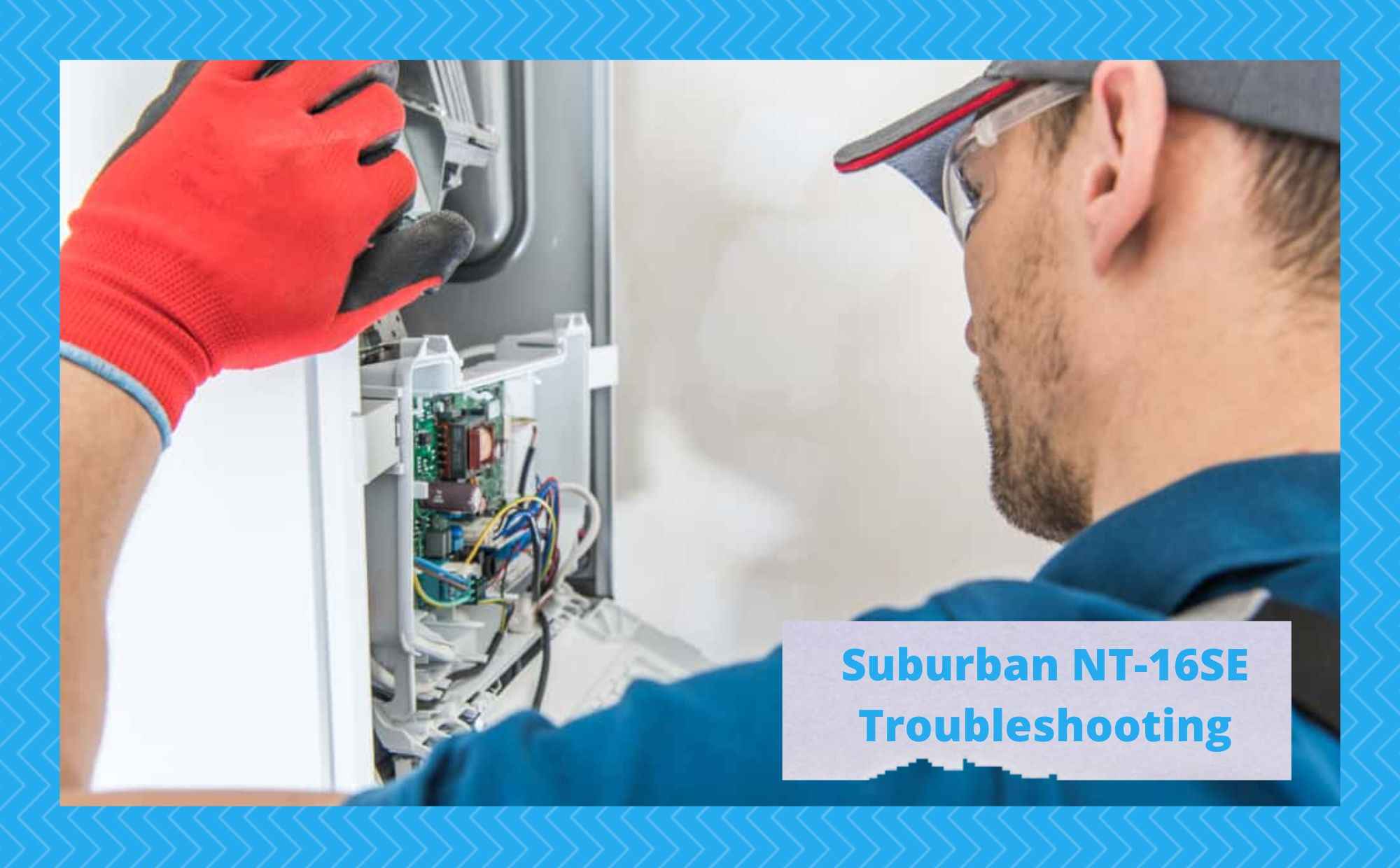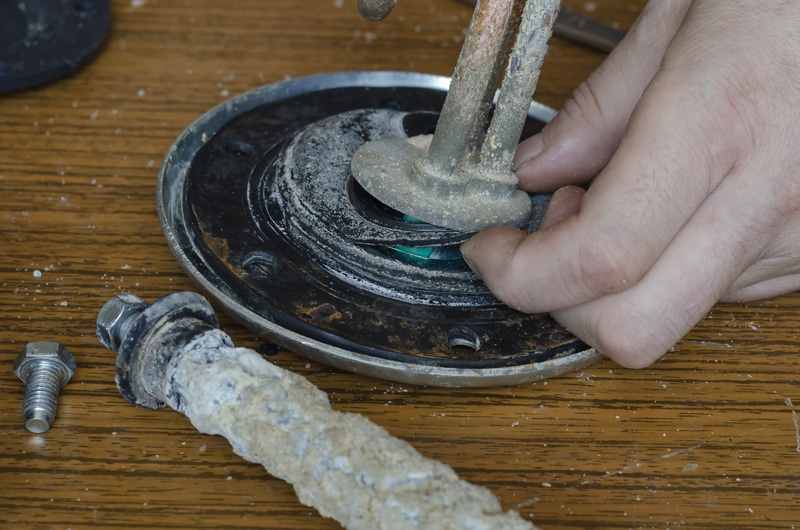
People who use their RVs during cold seasons rely on their RV furnaces heavily. The Suburban NT-16SE is a common furnace you can find in RVs and experiences typical furnace problems. Learning about the most common problems before your next fall or winter road trip would be best.
People experience problems with their Suburban NT-16SE because RV furnaces rely on propane and electricity. When there are multiple factors to rely on, there are multiple ways for a furnace to fail. Whenever anything goes wrong with your propane or electricity, you won’t be able to heat your RV.
Please continue reading to learn everything you need about common Suburban NT-16SE and how to fix them. Our guide will walk you through the most common issues people face with these furnaces and teach you basic RV furnace maintenance.
Suburban NT-16SE Troubleshooting
How The Suburban NT-16SE Works
Before you try troubleshooting your Suburban NT-16SE, it would be best to learn how this furnace works. The following are steps this device follows to provide enough heat to your RV, camper, or motorhome.
- Set your thermostat: Your Suburban NT-16SE will automatically turn on when the temperature of your RV falls short of your desired temperature. You must set your thermostat to initiate this automatic start. After your RV gets to the temperature, the furnace will shut off.
- Ignite the flame: The Suburban NT-16SE uses your RV electricity and available propane to light the pilot.
- Blow hot air: The fan on your RV furnace will automatically activate and spread warm air throughout the space.
Overall, the process of operating your RV furnace is simple. Most people don’t think about how it works because the furnace does most of the work for you. However, problems arise when the furnace doesn’t work as designed.
Common Issues People Experience with The Suburban-16SE
Now that you understand how an RV furnace works, it’s time to discuss people’s most common problems with their Suburban NT-16SE. However, these troubleshooting methods will also work with any other RV furnace you own. RV furnace problems are universal between brands.
1. The Furnace Light Doesn’t Activate
When the pilot light in your RV furnace doesn’t activate, it’s impossible to heat your RV. Unfortunately, this problem is common for anyone who owns a furnace or water heater because pilot lights are crucial. The most common reason your pilot light won’t activate is insufficient electricity or propane to get it going.
2. RV Won’t Maintain the Temperature
Some people have no problem turning on their RV furnace, but they’re still out of luck regarding heat. Other factors in your camper or RV could contribute to a lack of temperature maintenance throughout the vessel. There could also be something wrong with your thermostat that’s causing you to receive incorrect temperature readings.
3. Out of Propane
Propane is to fuel your Suburban NT-16SE relies on to keep you warm. Most people check their propane tank first before going through other troubleshooting methods.
4. Broken RV Furnace Parts
Unfortunately, things can go wrong at the manufacturing facility that causes broken parts throughout your furnace. Parts can also break due to wear and tear. The difficult aspect you’ll need to deal with when it comes to broken RV furnace parts is whether or not you should replace the parts or the entire thing.
Best Ways to Troubleshoot Your Suburban NT-16SE
Understanding why your RV furnace doesn’t work is the first step you need to take to fix it. However, each problem has different resolutions you need to work through to heat your RV. Follow the troubleshooting methods if you are unsure which option is disrupting your furnace’s functioning.
1. Check Your Voltage
The first thing you should do to fix your Suburban NT-16SE is look at your RV electricity. There could be something wrong with your electricity supply or the wires that connect your furnace to your electricity. Use a voltmeter on your furnace to see if you receive enough voltage.
If your furnace isn’t receiving enough electricity, it would be best to check other appliances in your RV to find the cause. Sometimes, the furnace isn’t the problem, but the generator is. You may also need to shut off appliances in your RV if you have too many loads.
Remember, you must limit your electric usage while living the RV lifestyle. Running too many appliances simultaneously will make them malfunction and can ruin these devices.
2. Seal Your RV
There’s a chance that the problem doesn’t lie with your generator or furnace. If you don’t have a properly sealed RV, it’s easy for heat to leak out and make it difficult to maintain your temperature. Check your RV for any holes or cracks by walking around and feeling for drafty areas. If you notice a draft, you must seal the area.
When you seal your RV, you’ll want to use interior sealant instead of exterior sealant. This is because the interior sealant will flow better with the rest of your decor. Technically, you can use exterior sealant, but many people don’t like how abrasive it looks inside an RV.
3. Look For Furnace Blockage
Although most RVs utilize a tightly confined space, managing your clutter is important. For example, you might need to throw things away if you find too much stuff in your RV to provide a consistent temperature. Also, whenever anything blocks your RV furnace, it will be impossible to keep your furnace running properly.
You should also keep your furnace clean from any dust or debris so that it works as it should. The blockages could be smaller than you expect but have a lasting impact on the quality of your room temperature.
4. Replace Broken Parts
You could have broken furnace parts due to mismanaged storage, factory problems, or wear and tear. Examine your RV furnace while it’s off for any broken parts or damaged wiring. If you notice any of these problems, it would be best to replace them as soon as possible.
You can also conduct biannual checkups on your furnace to keep it in working condition. This is the best way to avoid furnace problems while on the road. The last thing you want to worry about while traveling in winter is your RV furnace shutting down.
Is It Better to Repair or Replace Your Suburban NT-16SE?
If possible, it would be best to repair your furnace to save more money and increase your furnace’s longevity. Unfortunately, an RV furnace is one of the most expensive parts of your RV to replace. So you’ll want to save money whenever possible by repairing parts as soon as they go out.
However, there are some situations where it would be better to replace your furnace entirely. Furnaces are not built to last forever, so a replacement is inevitably incoming for an RV. Even though the Suburban NT-16SE
If you’re unsure whether your furnace is repairable, it would be best to bring it to a mechanic for a professional evaluation. A repair person understands what to look for in a furnace and how they operate. When too many things go wrong simultaneously, it is best to replace the furnace to keep your RV warm.
When To Replace Your Suburban NT-16SE
It can be tempting to repair your furnace when only a few things are wrong with the device. However, there could be plenty of underlying issues you don’t detect. In addition, you don’t want to waste money on repairs if your furnace goes out.
- You’ve had your furnace for a long time
- There’s rust on your furnace
- Your furnace doesn’t produce hot air
- Your furnace runs loud
- Your furnace pilot light doesn’t work
Any of these scenarios could indicate that you need to replace your Suburban NT-16SE. Fortunately, there are some furnace issues you encounter during the lifespan of your RV that are not eligible for repairs.
Final Thoughts
The Suburban NT-16SE furnace last most people don’t need to worry about furnace replacement until they’ve owned their RV for at least ten years. However, when you purchase a used RV, the lifespan of your furnace could be lower.
In addition, you don’t know how well the previous owner of the RV had maintained their furnace before your purchase.
Keeping your Suburban NT-16SE well-maintained is the easiest way to make this device last as long as possible. First, you’ll need to provide enough propane and electricity to heat your RV. Then your furnace will take care of the rest. You should investigate other appliances throughout your RV before replacing your furnace.









